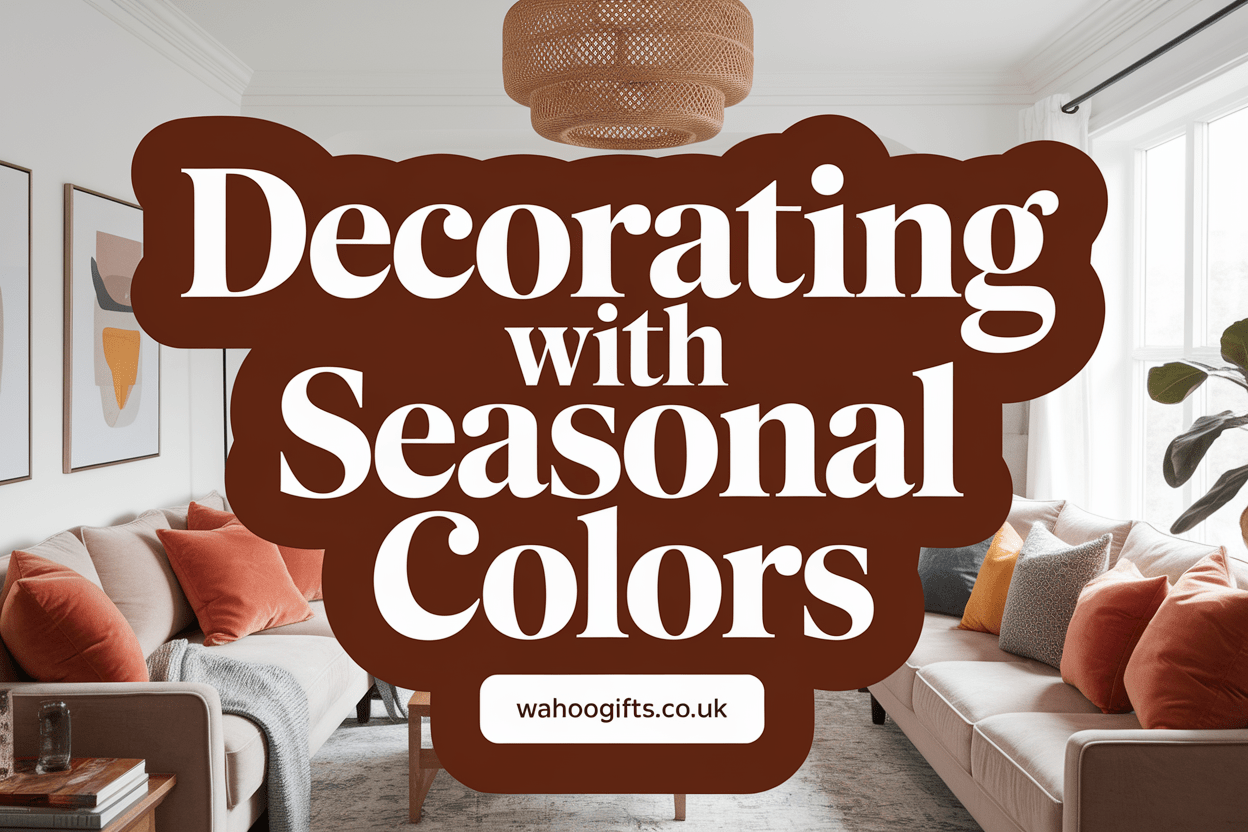
Decorating with Seasonal Colors: A Beginner's Guide to Transformation
Decorating with Seasonal Colors: A Beginner’s Guide
You ever walk into someone’s home and wonder, “How do they keep it cozy and fresh all year?” The secret is decorating with seasonal colors. This beginner's guide will help you get started—no interior designer skills or dozens of throw pillows needed. Just a little color know-how, creativity, and maybe a cup of coffee.
Key Takeaways
-
Seasonal decorating is about subtle, budget-friendly changes that keep your home feeling fresh and in tune with nature throughout the year.
-
Using a neutral color scheme as a base allows easy layering of seasonal colors and smooth transitions between seasons.
-
Focus on meaningful decor items and textures to create cozy, inviting spaces that reflect your unique style without overwhelming your home.
Why Bother Decorating with Seasonal Colors Anyway?
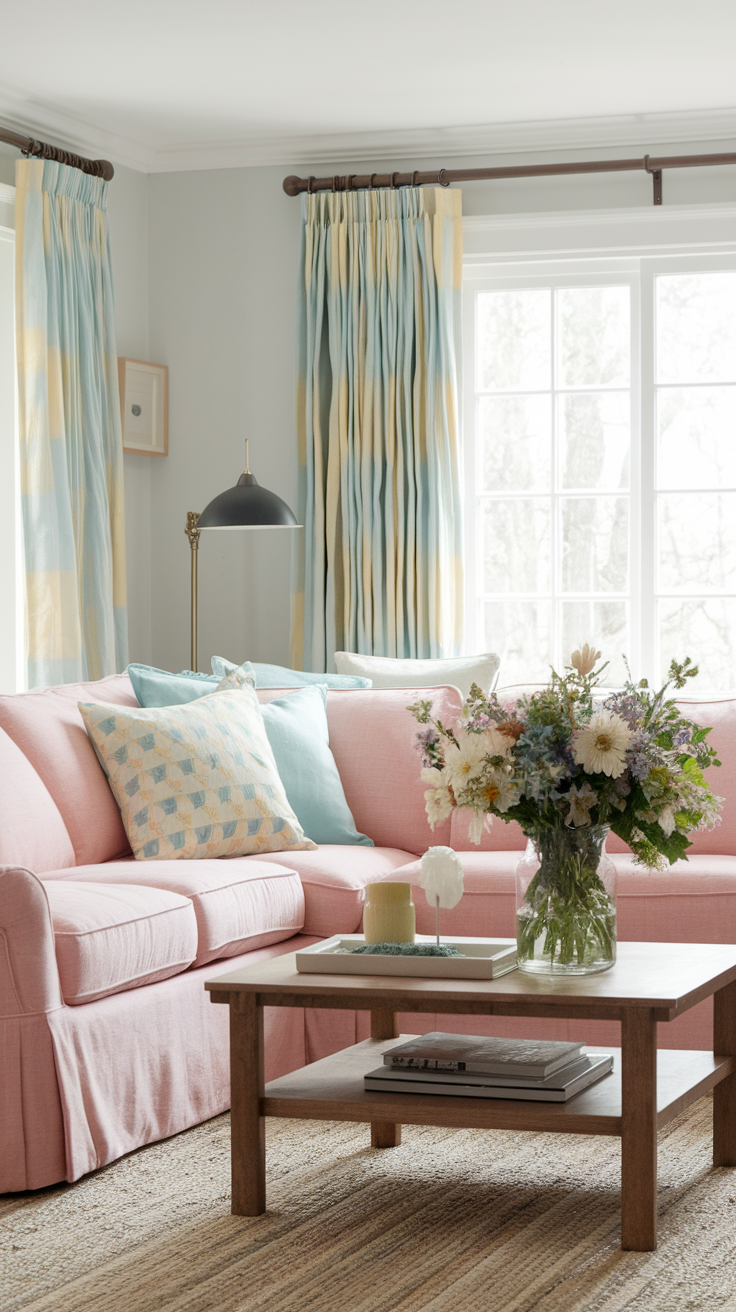
Okay, fair question. Why should you care about swapping out colors every few months? Isn’t that just… exhausting?
Actually, seasonal decorating doesn’t have to mean redecorating, and it doesn’t have to be overwhelming. It’s more about subtle changes that make your home feel in sync with nature. Think of it as giving your space a little mood boost every few months—without maxing out your credit card.
Here’s why it’s worth doing:
-
It keeps your home feeling fresh. You won’t get bored staring at the same setup year-round.
-
It’s emotionally grounding. Changing colors with the seasons helps your space mirror your mood—light and airy in spring, cozy and calm in winter.
-
It’s surprisingly easy to do. You don’t need to repaint or refurnish everything—just swap small things like throws, flowers, or art.
Seasonal colors can reflect the vibrancy of everyday life and bring new life to your home.
By using seasonal colors, you can create an inviting atmosphere and a sense of comfort that makes your home feel more welcoming and enjoyable for both you and your guests.
Ever noticed how you feel calmer surrounded by cool blues or more energized in a sunny yellow room? That’s not just you—it’s color psychology doing its thing, helping to enhance the beauty of your space.
Understanding Seasonal Color Palettes (Without the Art School Jargon)
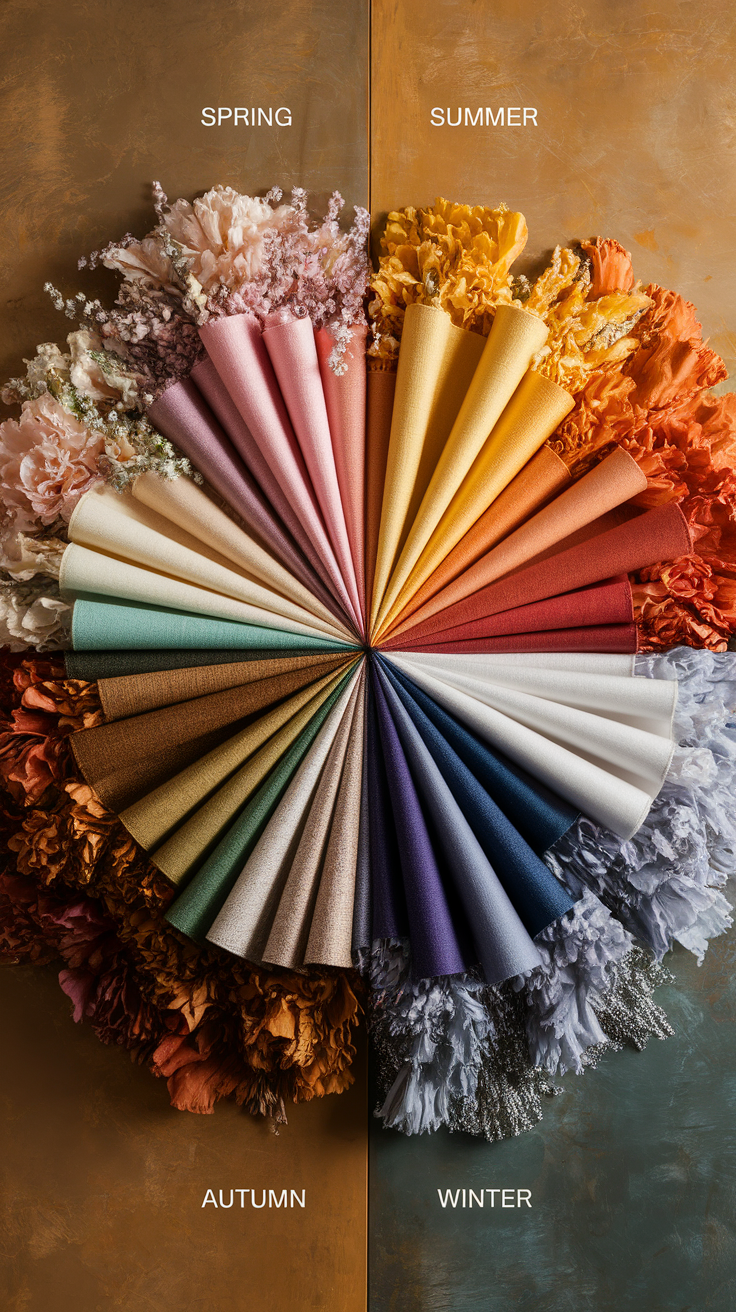
Before we dive into specific seasons, let’s clear up one thing: you don’t need to memorize a Pantone catalog. Promise.
Each season naturally has its own color personality. Here’s a quick cheat sheet:
-
Spring: Soft pastels and fresh greens. Think mint, blush, and daffodil yellow.
-
Summer: Bright, clear, and airy colors—turquoise, coral, and crisp white.
-
Autumn: Warm and cozy hues like rust, mustard, olive, and terracotta.
-
Winter: Deep, rich tones—navy, emerald, cranberry, and metallics.
Starting with a primary color or a favorite shade helps you build a cohesive color palette, making it easier to layer supporting colors and accents for a harmonious look.
Think of these palettes as vibes that can help guide the overall theme of your room or home, rather than strict rules. The idea of using seasonal palettes is a flexible approach to decorating—if “winter” makes you want to use deep blues but also throw in some twinkly silver? Go for it. There’s no color police here.
Spring: Fresh Starts and Soft Hues
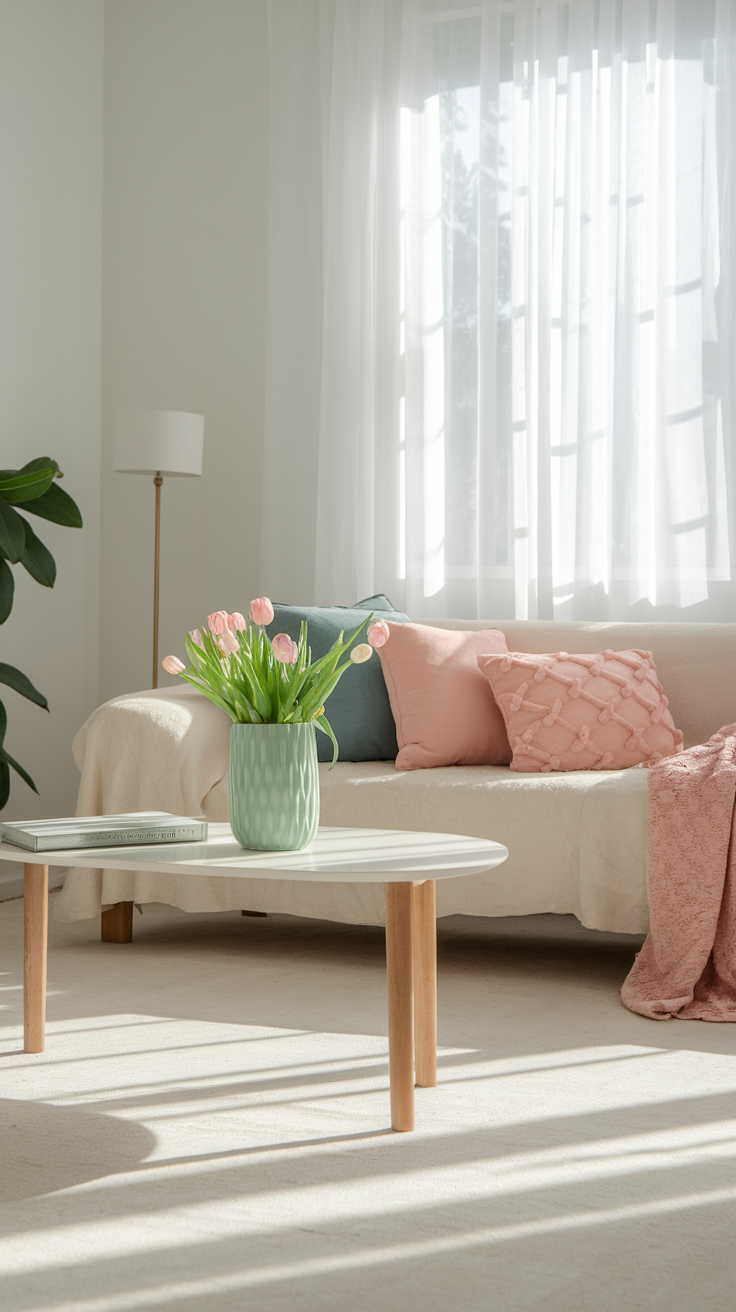
Spring is basically the universe’s way of saying, “Hey, wake up and open a window.” It’s the perfect time to shake off those winter blues (literally) and bring in fresh, airy colors. Use accent colors to brighten up your spring decor and create visual interest. Fill your home with spring touches in different rooms to make each space feel refreshed and lively. Decorate your spaces with spring-inspired elements for a cohesive, welcoming atmosphere.
Easy Spring Color Combos
-
Mint green + blush pink = instant calm
-
Lavender + soft gray = romantic but modern
-
Butter yellow + white = cheerful and bright
Decorating Tips for Spring
-
Swap out heavy blankets for light cotton throws.
-
Add fresh flowers or faux greenery (because, let’s be real, not all of us can keep plants alive).
-
Replace dark cushions with pastel pillow covers.
-
Hang floral or nature-inspired art prints for an instant lift.
Want a pro tip? Don’t underestimate curtains. Changing your drapes to something sheer or lightly patterned can transform the whole mood of your living space.
Summer: Bright, Breezy, and a Bit Bold
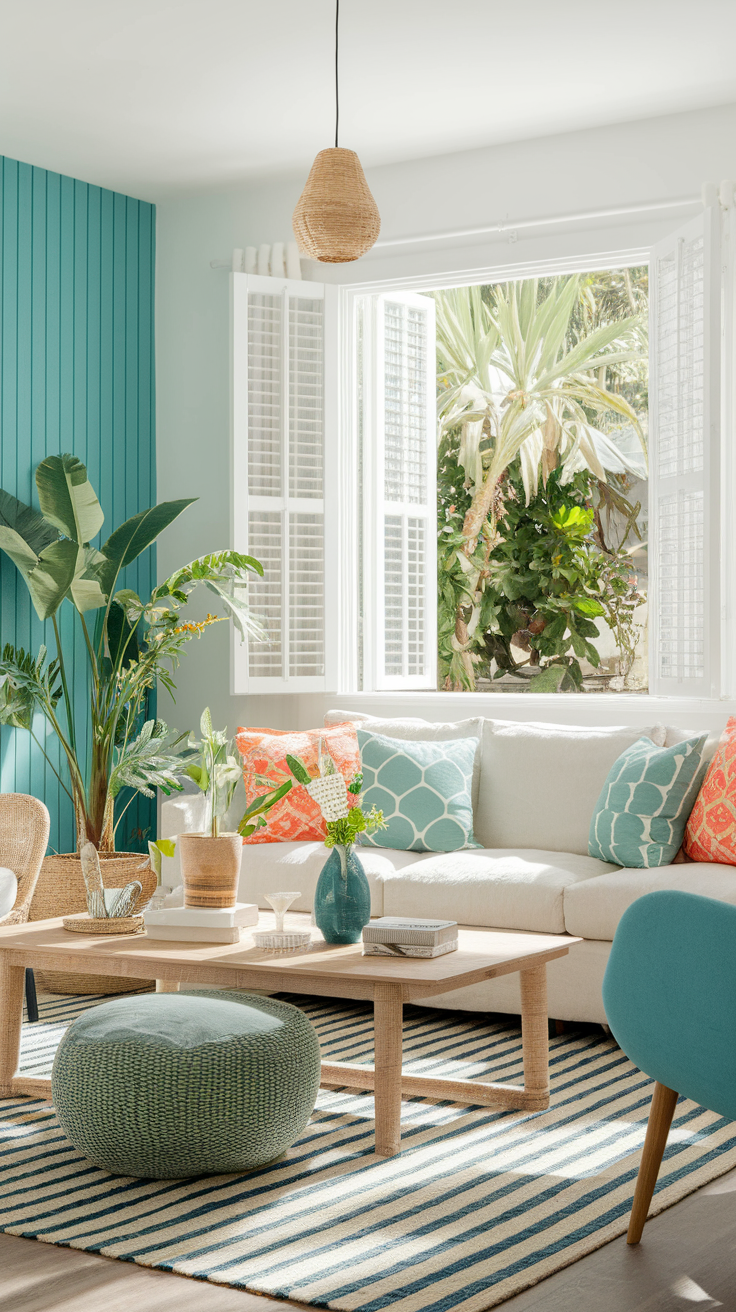
Ah, summer—the season of iced lattes, beach trips, and colors that practically scream “vacation mode.” This is the perfect time to refresh your space by blending different design styles and introducing key pieces that add visual interest. Opt for clean lines in your furniture and decor to achieve a breezy, uncluttered summer look, while mixing bold colors and contrasting elements to keep the space lively and engaging.
Summer Color Combos That Pop
-
Turquoise + white = coastal vibes
-
Coral + gold = fun and warm
-
Navy + sunflower yellow = bold but balanced
Summer Decorating Tricks
-
Use lightweight fabrics like linen or cotton—your space should feel as breathable as your favorite sundress.
-
Add pops of bright color through accessories—candles, vases, rugs, or wall art.
-
Incorporate natural textures like jute, rattan, or wicker for that “beachy without trying” feel.
And hey, less is more in summer décor. You don’t want your space to feel cluttered when the goal is airy and relaxed. Ever try relaxing in a room full of mismatched patterns? Yeah… don’t.
Autumn: Cozy Vibes, Warm Tones, and Pumpkin Everything
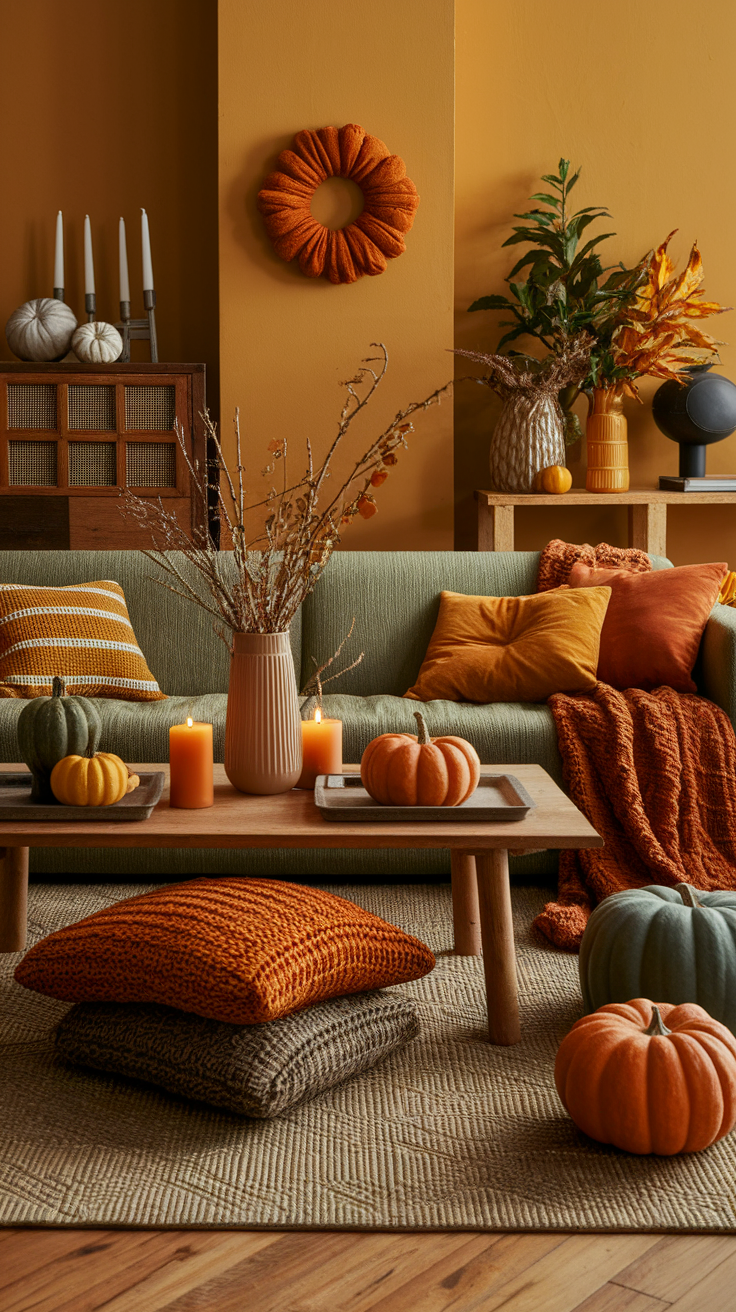
When sweater weather hits, your home should feel like a warm hug. Incorporate pumpkins and miniature pumpkins as part of your autumn collection of decor items to evoke cozy, seasonal vibes. A cohesive autumn theme can be achieved with carefully selected seasonal decor, bringing that coziness we all crave—without turning your living room into a Halloween store.
Autumn Color Combos That Feel Like a Hug
-
Rust orange + cream = cozy chic
-
Olive green + mustard yellow = earthy and rich
-
Terracotta + brown = rustic perfection
Decorating Tips for Fall
-
Swap out summer accents for chunky knits and soft, textured fabrics.
-
Add candles (bonus points if they smell like cinnamon or apple pie).
-
Layer your space—blankets on sofas, pillows on chairs, maybe even a seasonal wreath on your wall.
You can also bring in nature-inspired accents—pinecones, branches, dried flowers. These small touches make a big visual difference (and they’re usually free, which IMO, is the best kind of décor 😉).
Winter: Elegance, Depth, and Sparkle
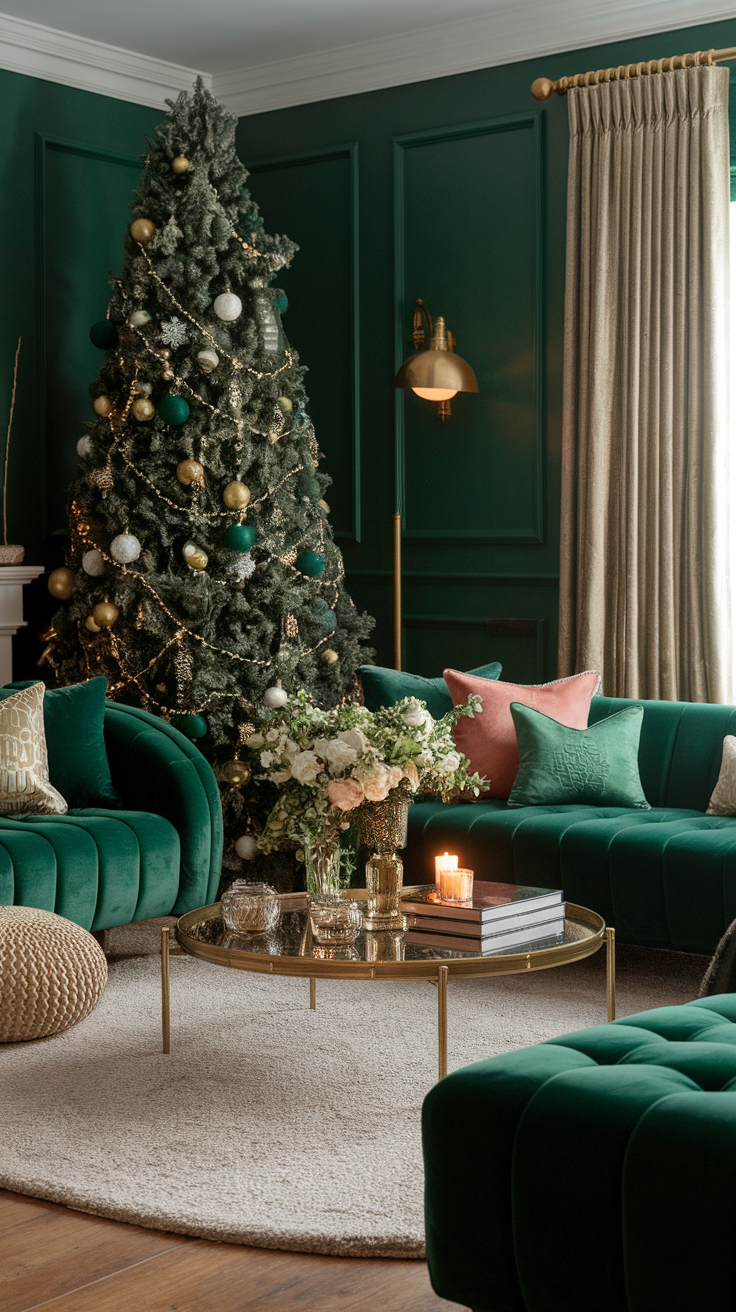
Winter décor doesn’t have to scream Santa’s workshop. It’s about creating warmth, elegance, and that “I never want to leave the couch” energy. Try using pine cones in your living room arrangements to bring a natural touch to your winter decor. Focus on making your home feel filled with cozy textures and seasonal accents that encourage rest and relaxation. Don’t forget to make your door area welcoming during winter with a simple wreath or inviting mat to set a warm tone as soon as you enter.
Winter Color Combos That Work Every Time
-
Navy + gold = timeless and classy
-
Emerald green + cream = rich and cozy
-
Silver + deep red = festive but not over the top
Winter Decorating Tips
-
Add plush textures like velvet or faux fur for instant warmth.
-
Use metallic accents (gold, silver, bronze) to reflect light in darker months.
-
Swap lightweight décor for layered pieces—heavy throws, thick rugs, and soft lighting.
Ever tried swapping your bright white bulbs for warm-toned ones in winter? Game changer. Your space instantly feels softer, cozier, and a little more magical.
How to Transition Between Seasons (Without Losing Your Mind)
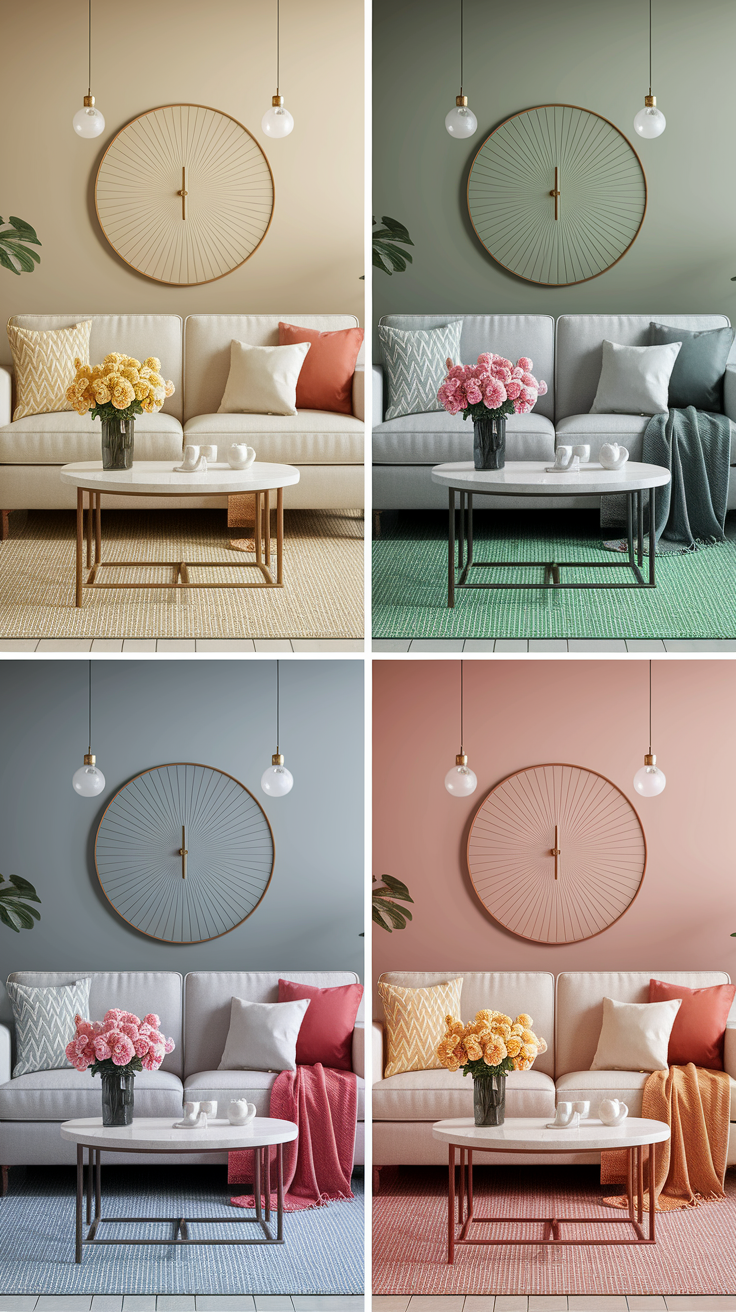
Now, here’s the tricky part—how do you actually transition between these color schemes without your home looking like a mood ring?
Easy. You use neutral anchors.
Neutral tones like beige, gray, and off-white make the perfect backdrop for seasonal color swaps. Once your base is neutral, you can layer colors in and out as the year goes on. Most people prefer easy, low-maintenance seasonal swaps, so choosing decor that works for more than one season helps simplify transitions and reduces the need for constant redecorating.
Here’s my go-to system:
-
Keep major furniture pieces neutral (sofa, curtains, rugs).
-
Change small accents each season (pillows, throws, wall art, table décor).
-
Use seasonal flowers or greenery to tie everything together.
-
Focus on a cohesive color palette to ensure your space feels unified and transitions smoothly from one season to the next.
That way, your living room doesn’t go from “summer beach house” to “autumn cabin” in one chaotic day—it just evolves. Smooth transitions = less clutter, more sanity.
Budget-Friendly Seasonal Decorating Tips
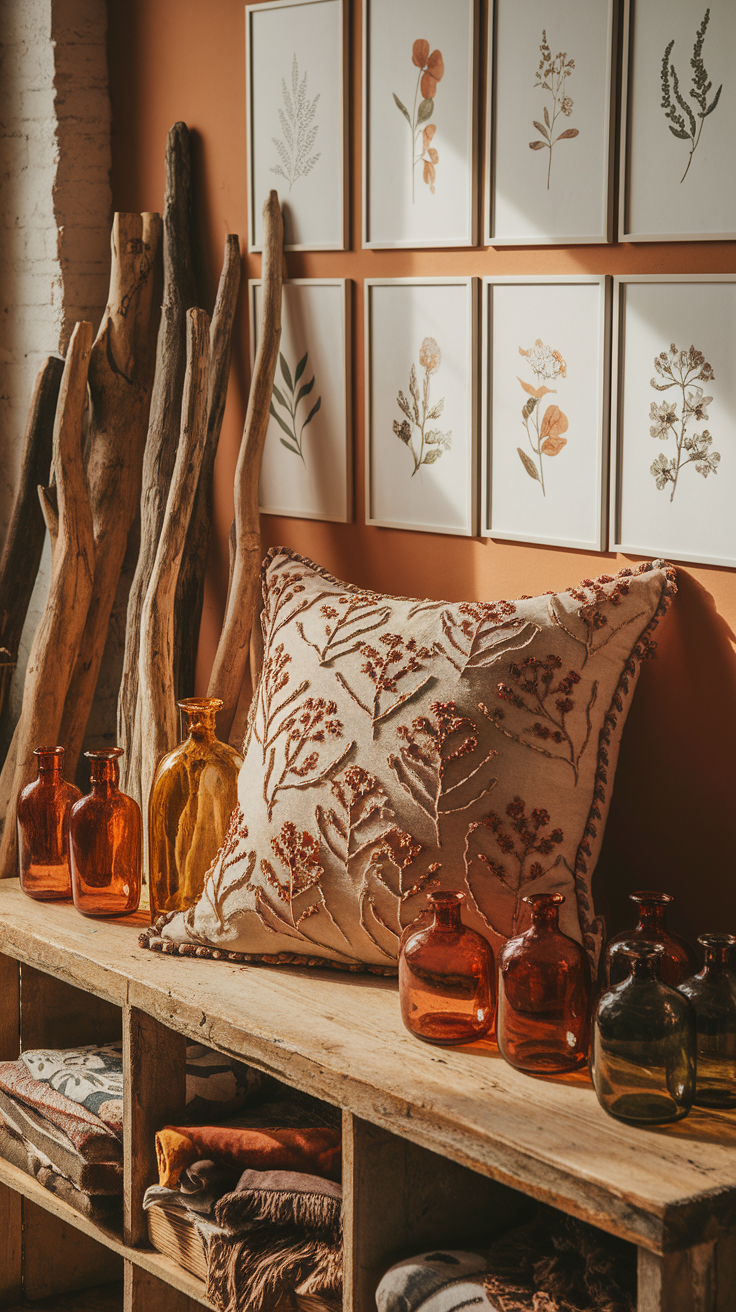
Let’s be honest—no one wants to spend hundreds just to change a few colors every few months. Good news: you don’t have to.
Whether you're a professional or a DIY enthusiast, any home decorator can use these budget-friendly tips to refresh a space without breaking the bank.
Here are a few wallet-friendly ideas:
-
Cushion covers instead of new cushions. They take up less space and cost way less.
-
Printable wall art. Download seasonal prints online (some are free!) and rotate them in the same frames.
-
DIY accents. Spray paint old vases or picture frames in seasonal hues.
-
Shop off-season sales. Grab those winter pieces in summer—they’re usually half off.
And here’s my favorite hack: use what you already have. Rearrange furniture, switch accessories between rooms, or flip your bedding set. You’d be surprised how new your space feels after a few smart swaps.
Common Mistakes (and How to Avoid Them)
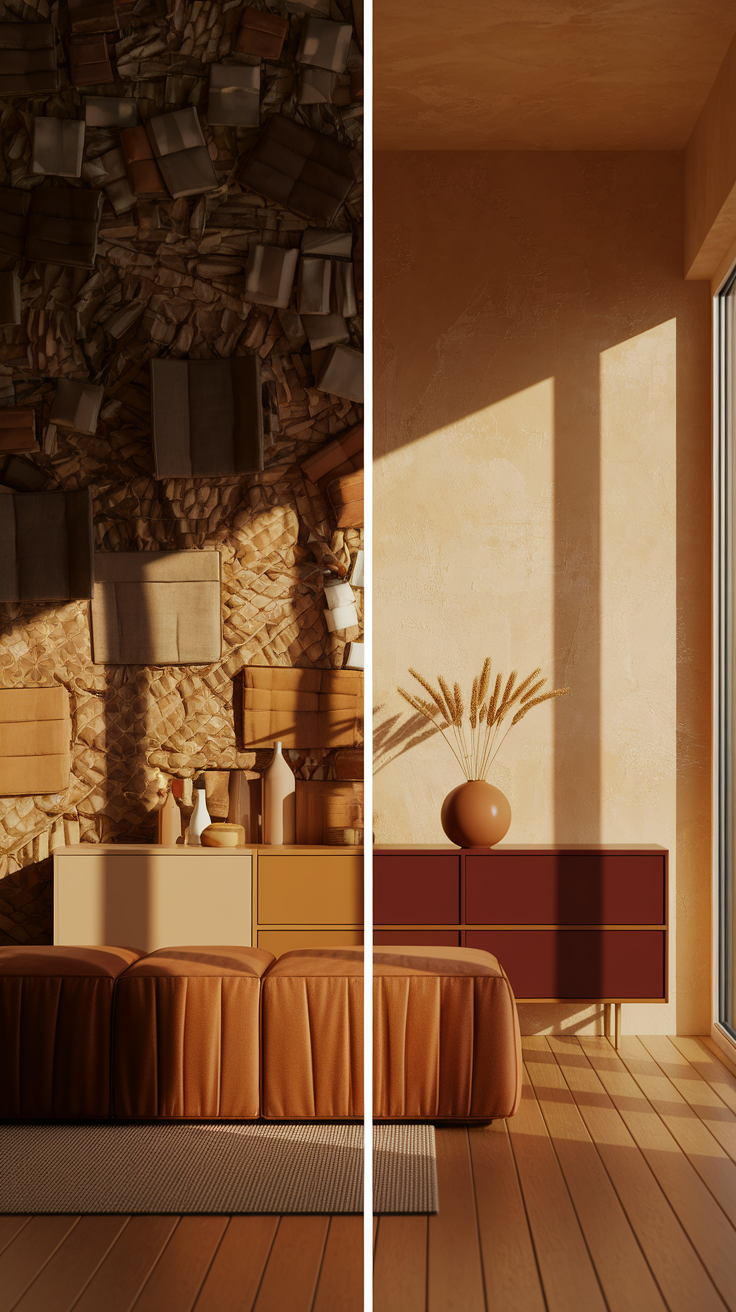
Okay, let’s talk about what not to do—because we’ve all made these mistakes at least once.
-
Mistake 1: Overdoing it. Your space shouldn’t look like a Pinterest board exploded. Too many items or patterns can make a room feel overwhelming and chaotic. Pick 2–3 key colors and stick with them.
-
Mistake 2: Ignoring lighting. Colors look totally different depending on natural light. Test them before going all in.
-
Mistake 3: Forgetting texture. A monochrome room feels flat unless you mix materials (linen, wool, glass, etc.).
-
Mistake 4: Changing everything at once. Start small—add one or two seasonal pieces at a time. Instead of just filling your home with random decor, fill it with items that matter to you and have meaning.
Remember, decorating should be fun, not stressful. If it feels like work, you’re doing too much. Your decor reflects your personality and style, so make intentional choices that feel authentic to you.
My Personal Take: Make It You
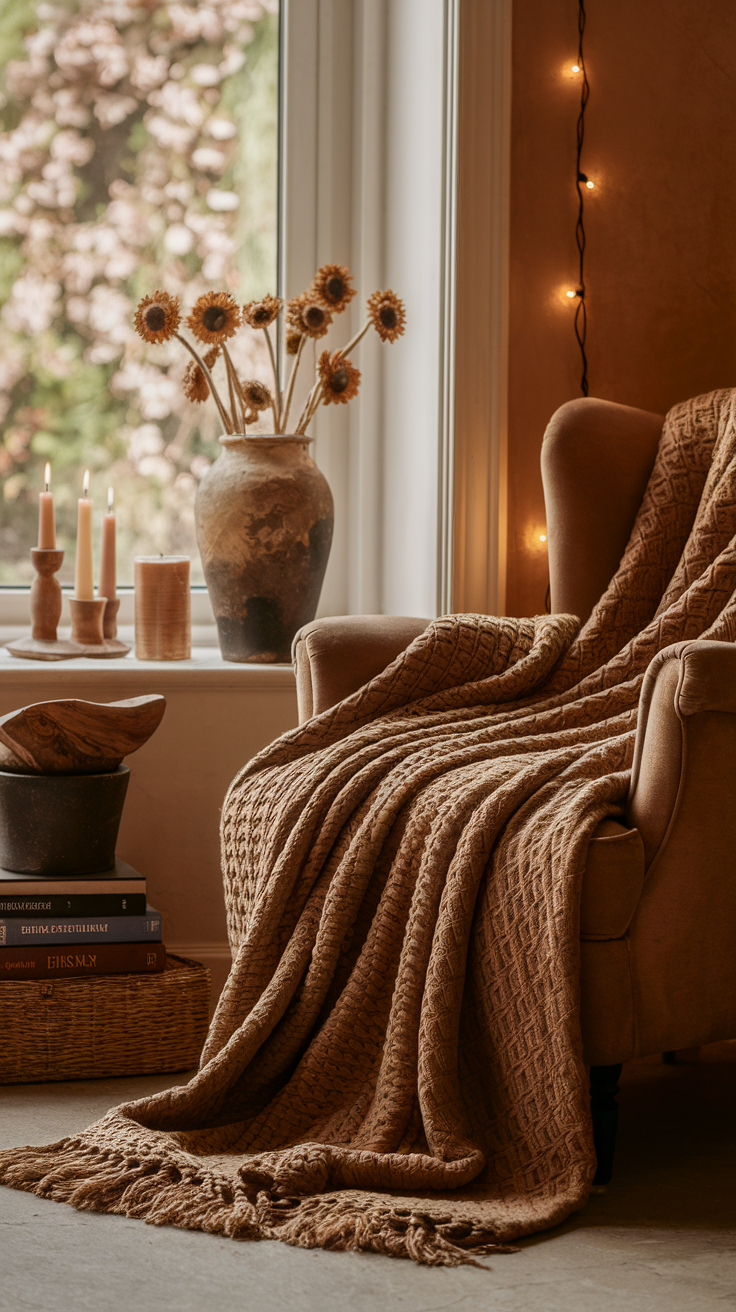
Here’s the thing—decorating with seasonal colors isn’t about following trends or copying Pinterest-perfect homes. It’s about making your space feel like home—whatever that means for you. Embracing your own unique style is key to creating a space that truly reflects who you are.
In my house, that means way too many throw blankets, a rotating selection of candles, and the occasional string light situation that my partner insists is “too much.” Spoiler: he’s wrong. Adding these personal touches brings life and energy into our home, making it feel vibrant and welcoming.
So if your version of “spring décor” includes neon yellow cushions or if your “winter palette” has zero red in sight—do it. There’s no right or wrong, just what feels right for you. Remember, your decorating choices connect your home to the wider world of design, allowing you to express yourself while drawing inspiration from everywhere.
FAQ: Decorating with Seasonal Colors
How do I figure out my seasonal color?
Start by paying attention to the colors you naturally gravitate toward. Do you love soft pastels and fresh greens (spring), or are you more into earthy tones and rich golds (autumn)? You can also look at your wardrobe—the colors you wear often usually match the tones you feel most comfortable around. If you want to be extra thorough, search for a seasonal color analysis quiz online—it’s fun, quick, and surprisingly accurate.
How to coordinate colors when decorating?
The key is balance. Pick a dominant color (about 60% of your space), a secondary color (30%), and a pop color (10%) for accents. For example, if your main color is a neutral beige, layer in soft greens and finish with a few bold coral pieces. And don’t forget: texture matters as much as color. Mixing fabrics, finishes, and patterns keeps everything looking intentional—not chaotic.
Can I do a color analysis myself?
Absolutely! You don’t need a pro stylist for that. Stand near natural light, hold up fabrics or décor items in different shades, and see how they make the space (and you) feel. If certain tones seem to “light up” your room or make it feel cozy, that’s a good sign you’re on the right track. Just trust your gut—if you love it, it works. :)
What is the autumn color palette for home decor?
Autumn décor is all about warm, grounding tones. Think rust orange, deep mustard, olive green, and terracotta. Mix in creamy neutrals like beige or off-white to keep things balanced. Add cozy textures—wool, wood, and soft knits—and you’ve got that perfect “pumpkin spice meets cozy cabin” vibe.
Final Thoughts: Let Your Space Evolve
Decorating with seasonal colors is one of those small joys that can make your home feel alive, adaptable, and uniquely yours. It’s not about perfection—it’s about playing with mood, color, and creativity throughout the year.
So go ahead—experiment. Paint that vase. Swap those cushions. Light that candle that smells like “cozy mountain air” (whatever that means).
Your home should change with you—and the seasons are just another excuse to have a little fun with it. After all, what’s the point of four seasons if we can’t enjoy them, right? :)
Happy decorating!





